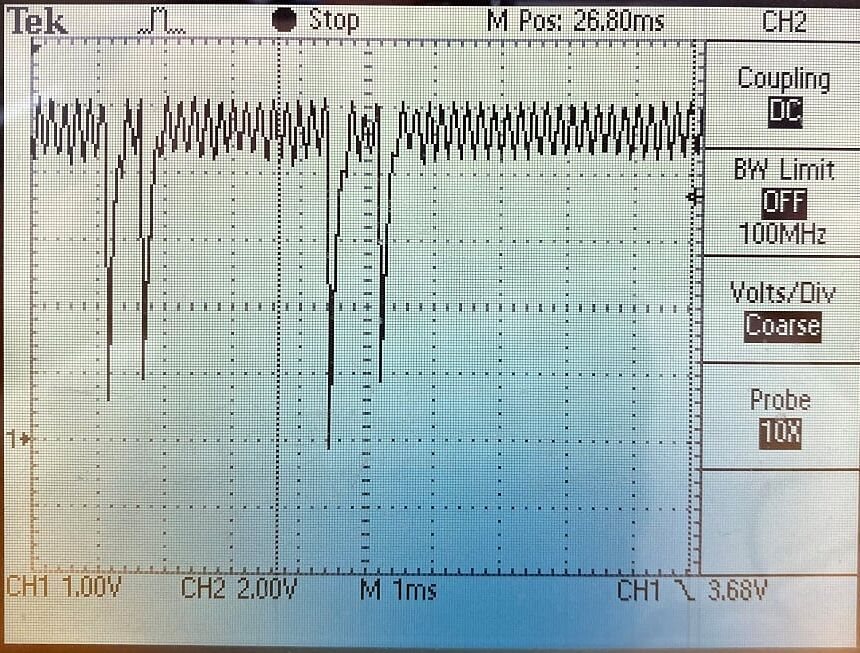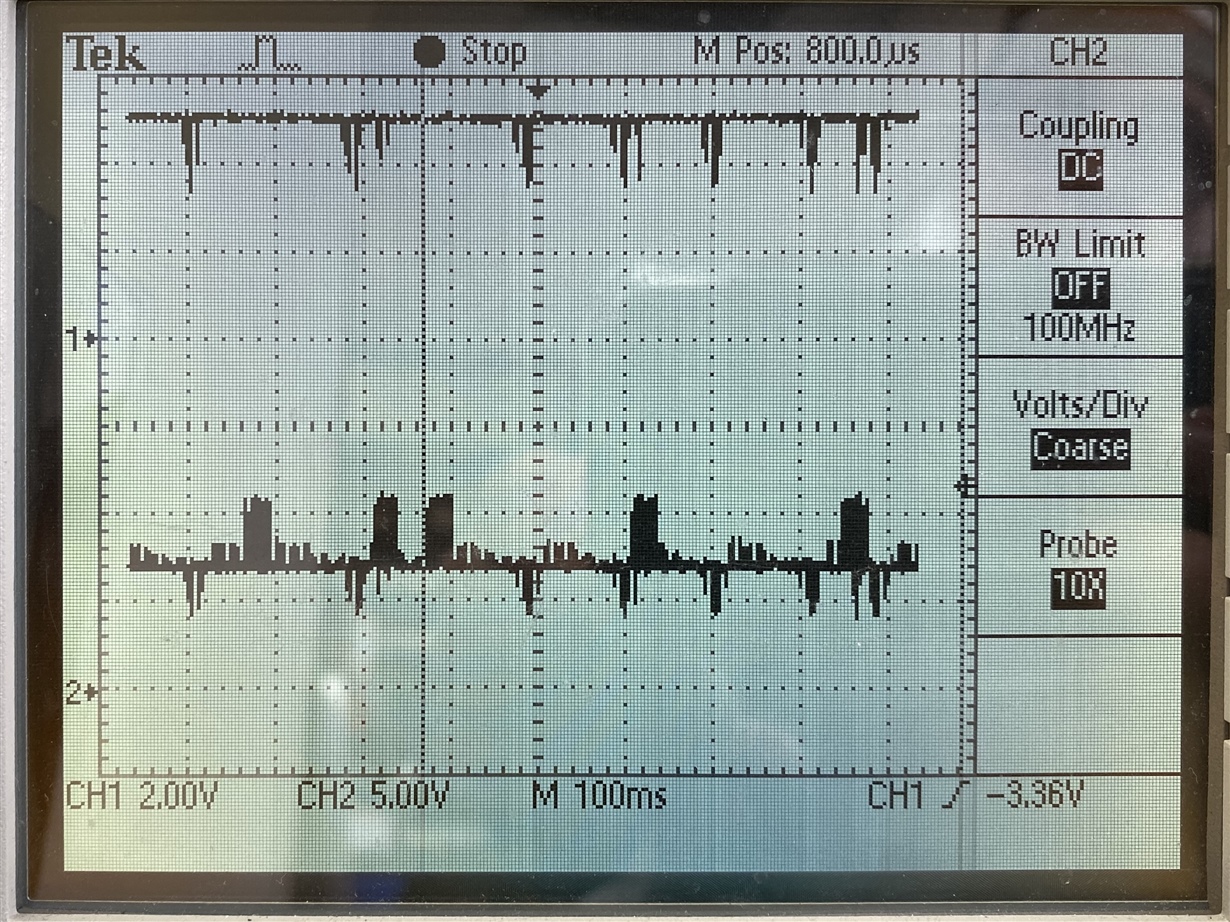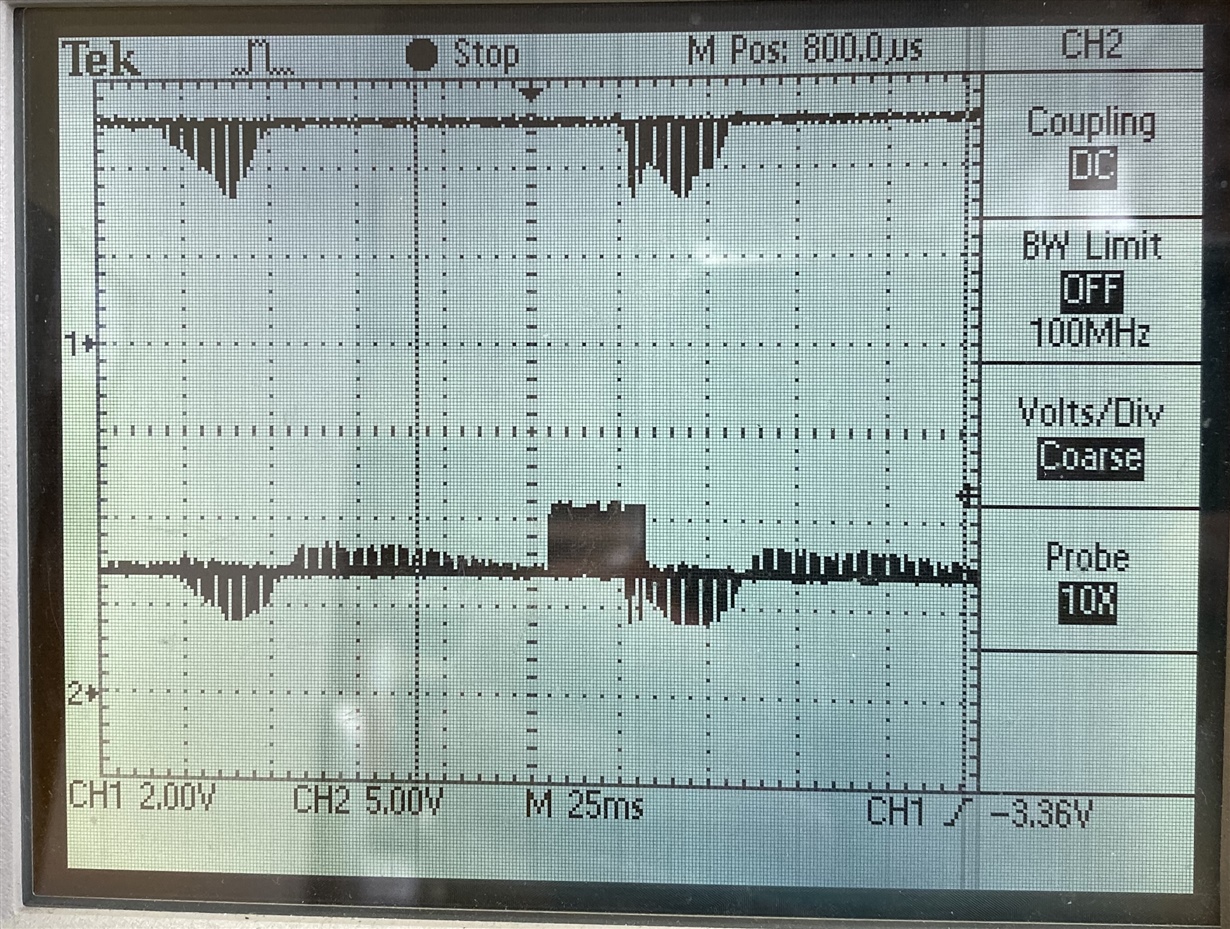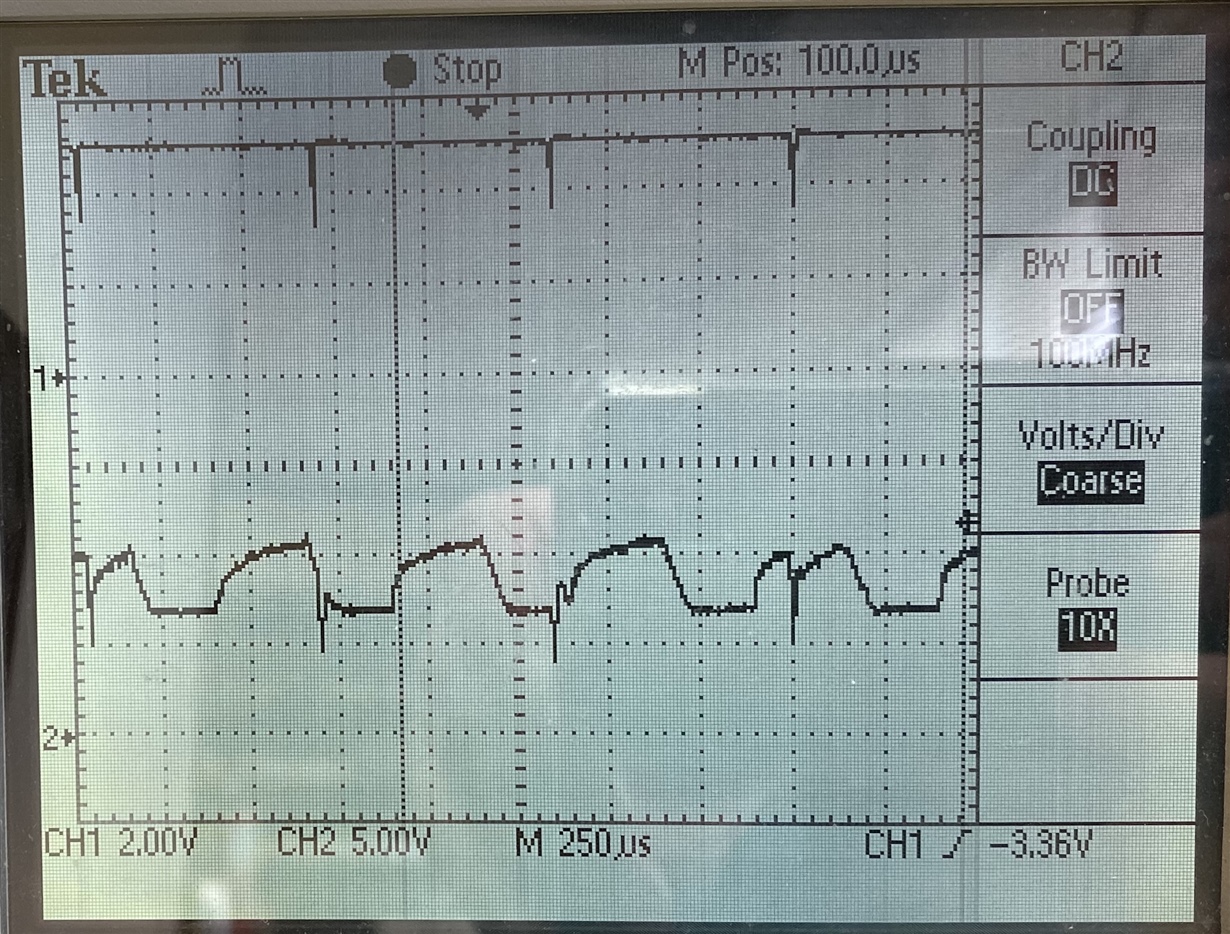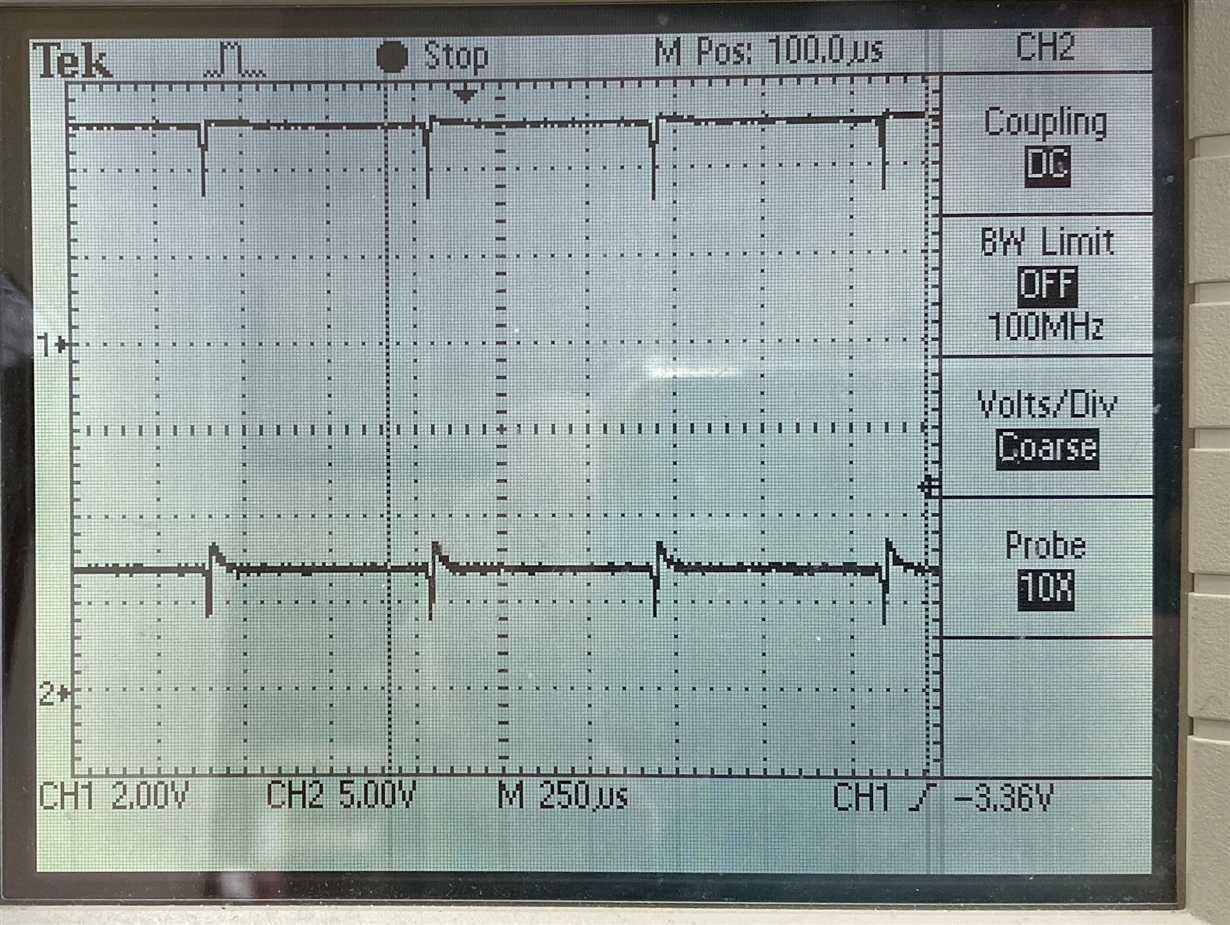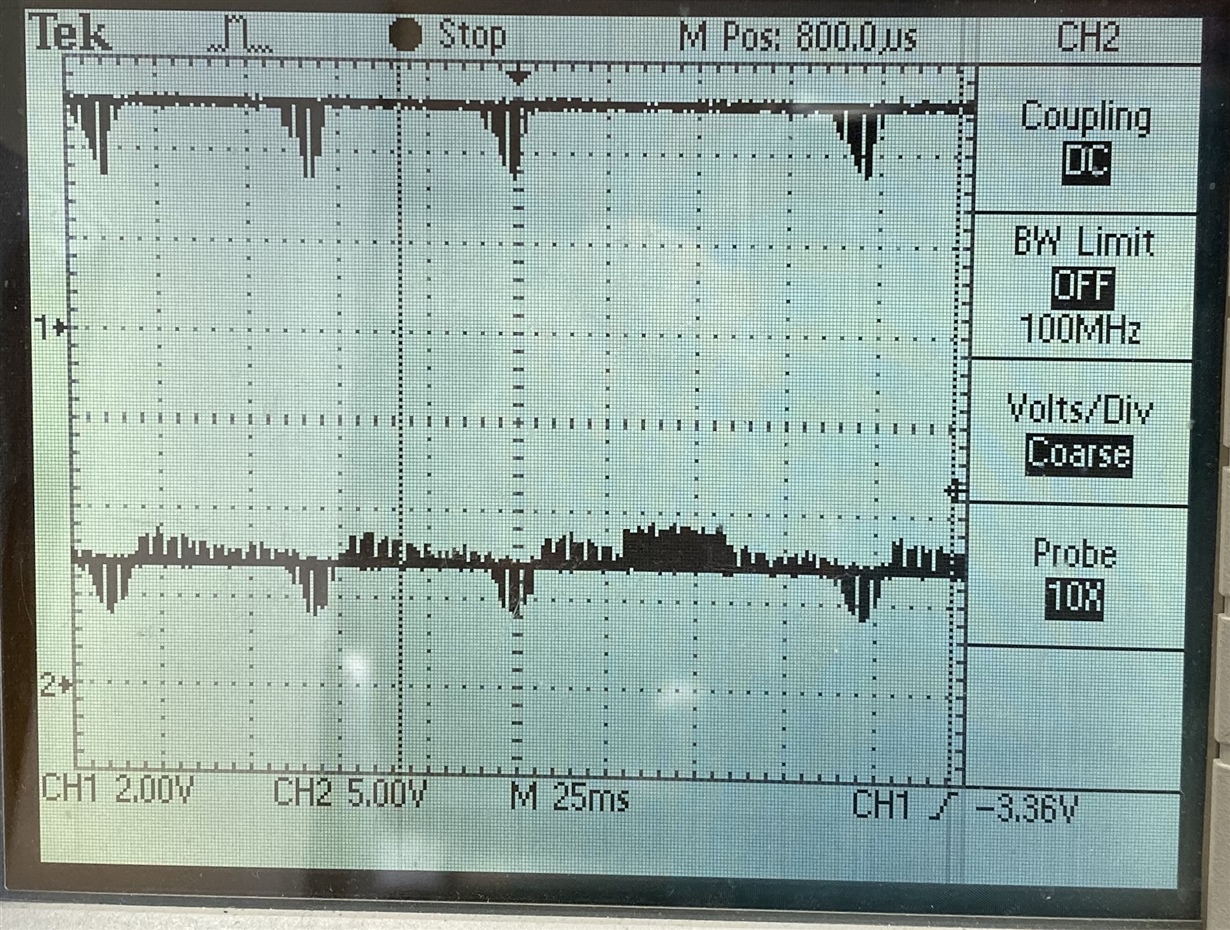Other Parts Discussed in Thread: BQ51010B
Hi,
I am fairly new at this Air Charger and have developed a PCB design that uses your reference design of the BQ51013B-EVM764 Evaluation Module.
After some rework on the PCB, I was able to get the unit to power up and tested under a load of 1 Amp.
The problem that I am facing is that the output power has small power loss spikes that cause my battery charger to shutdown due to the UVLO Built in "Under Voltatge Lockout" Circuit.
Putting a scope on the output showed no spikes at 100 mA loads, but has the load increased, the spikes started showing up.
Here is the circuit that I am using,
The Coil used had a Ls' of 14.3uH and Ls of 15.36 uH R= 0.255 Ohm Using the formulas provided in the documents I came up with the above values for the caps.
Now Vout is stable and clean at 100 mA load, but I start getting these voltage lost spikes when I increase the load to above 200 mA to 1000 mA.
This is the result when I put a 200 mAmp load to the output. The output starts to get these voltage drops spikes?
It does get more frequent as you add more load to the output. Here I have 500 mAmp load and the output looks like this:
It Seems more frequent as I increase the load on the output. The voltage does drop a little as to be expected when I increase the load, but the trouble I am having is how to remove these spikes.
I've replaced all the 10 uF caps and tried higher caps, it seem to have caused a slow down on the boot up process but did not remove the spikes.
I'm not sure what I should be changing to try to fix this... Your help to this would be greatly appreciated.
Steve




